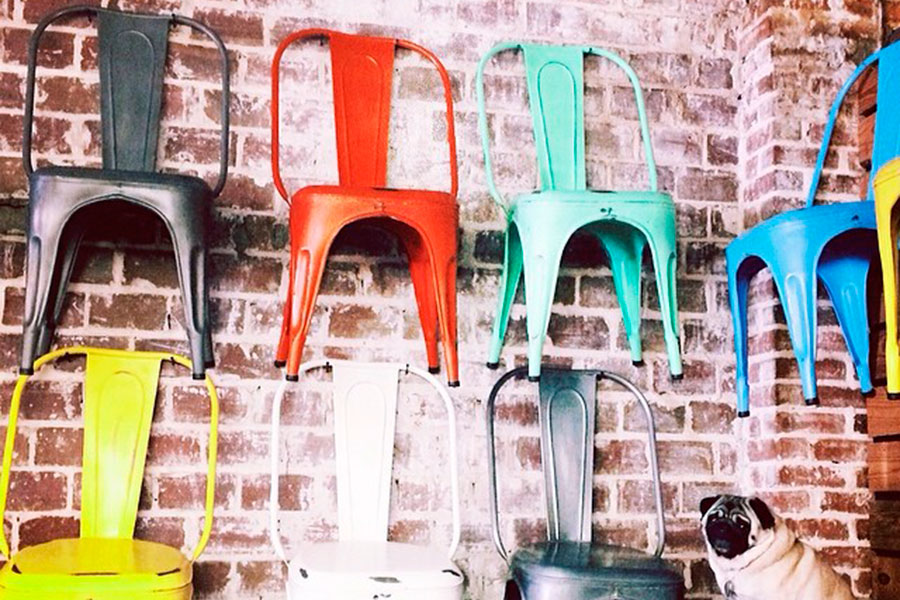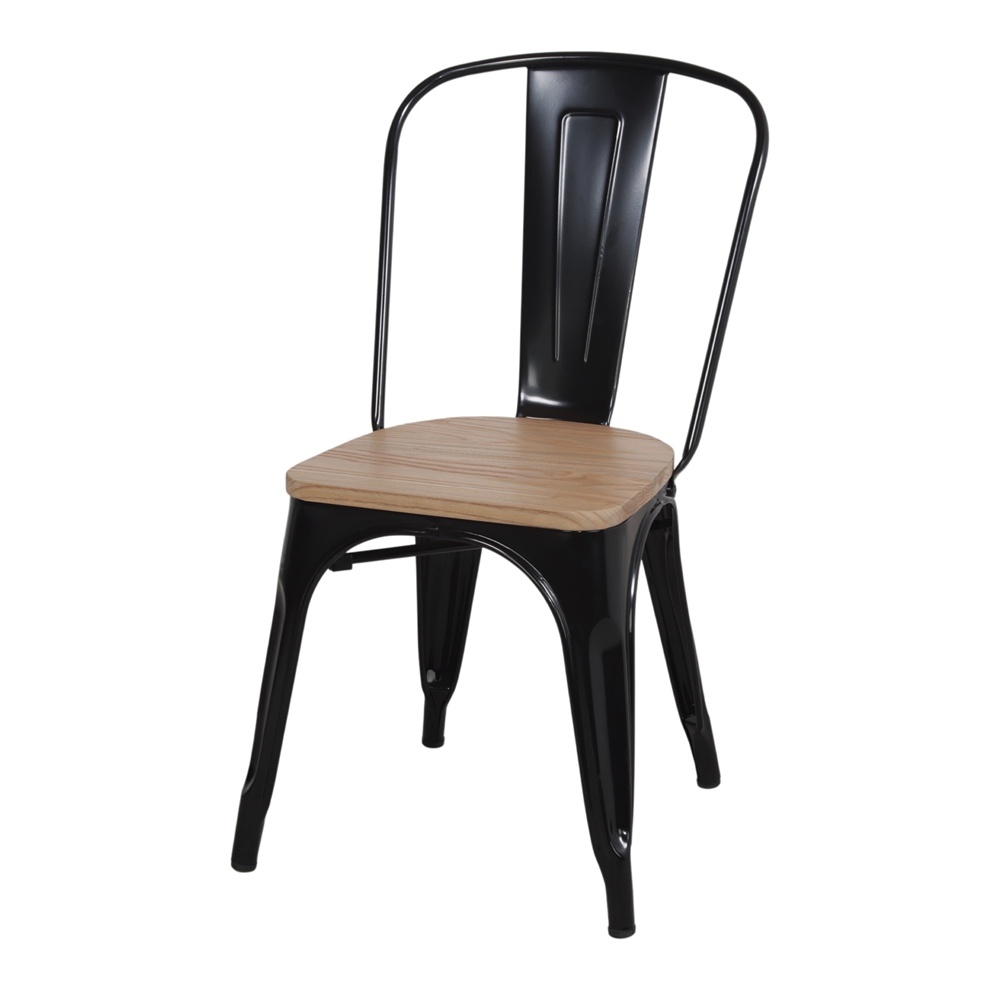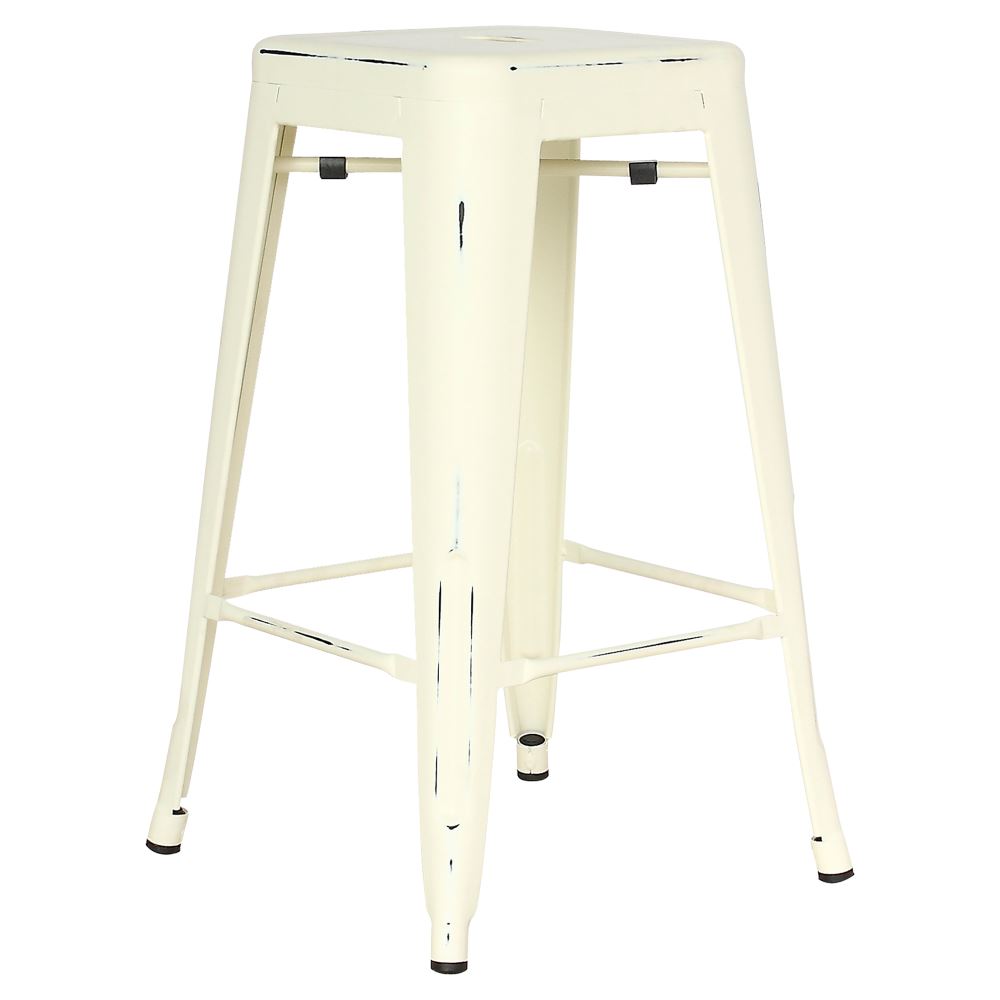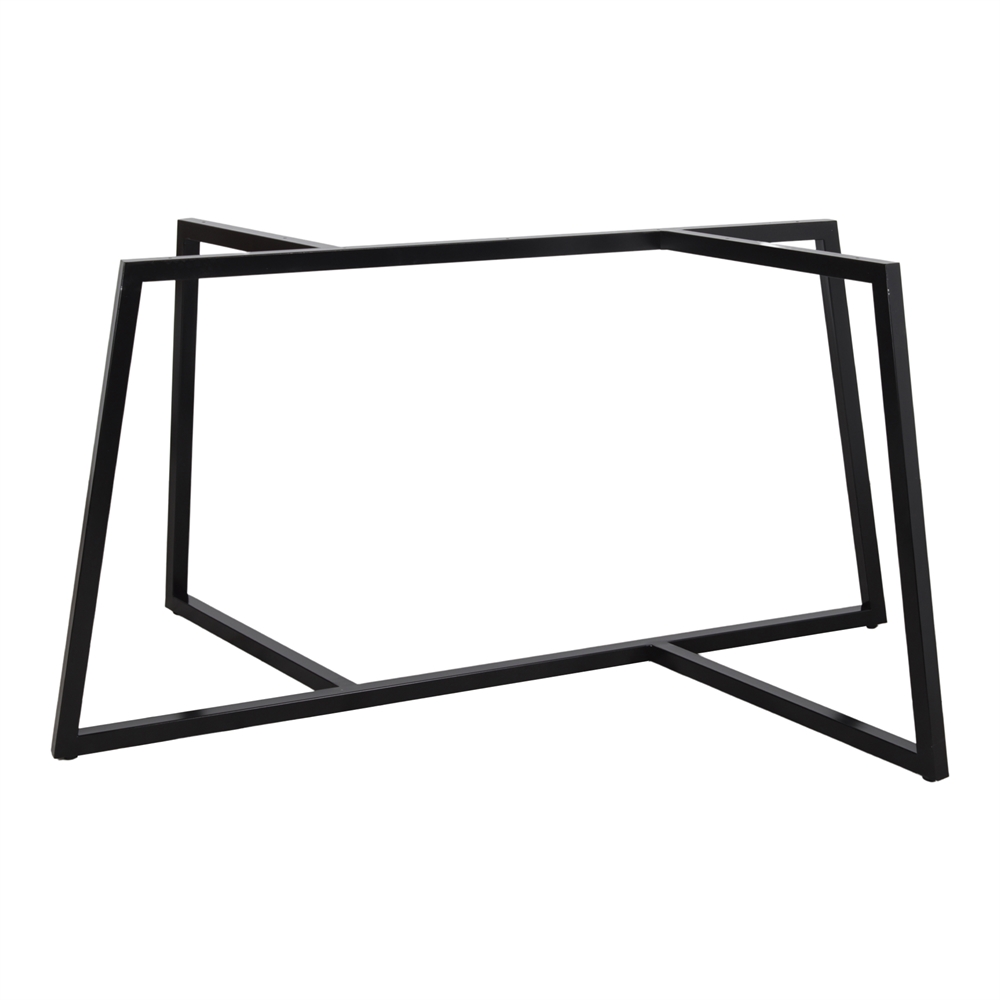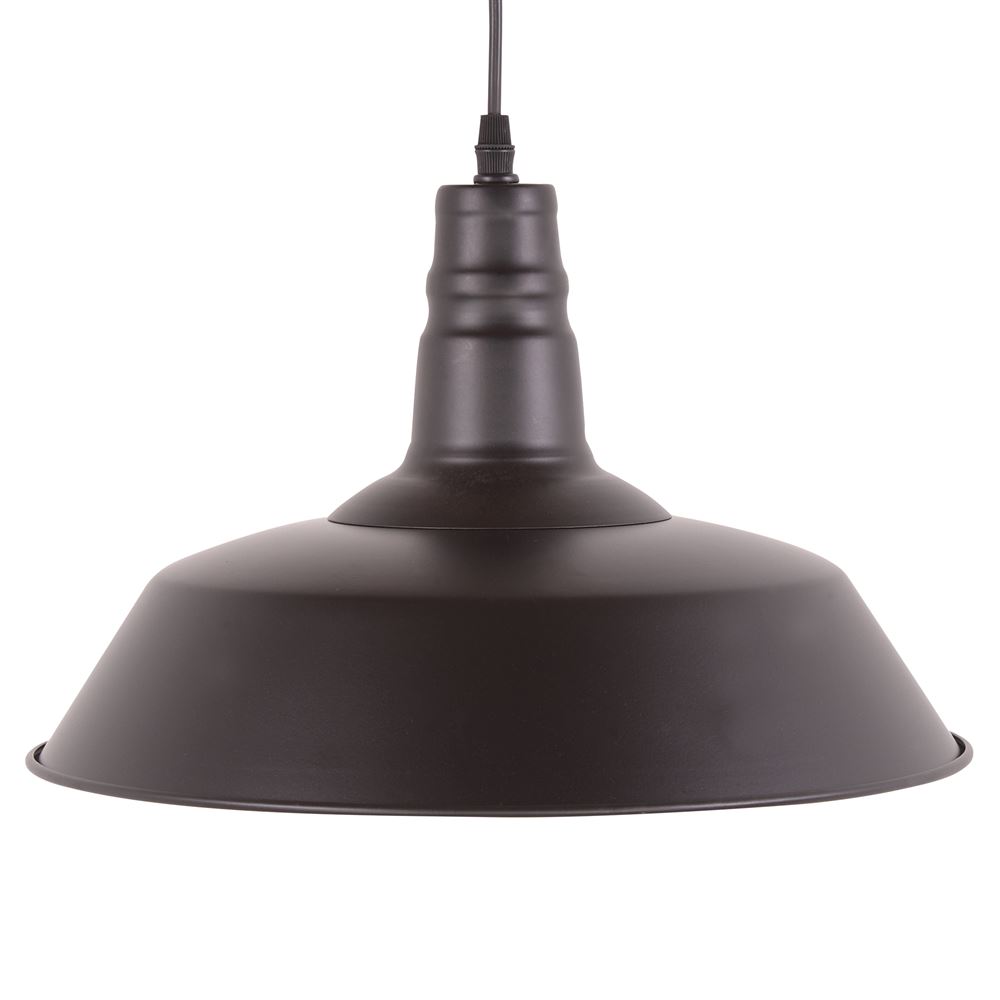About five years ago, with the rise of hipster decoration (exposed brick, reclaimed furniture, pallets, Edison bulbs…) we couldn’t stop seeing them everywhere. Restaurants, cafes, stores, offices… every instagram-worthy place had them. We’re talking about the Tolix chair, which went from being an icon of industrial design around the world to an indispensable piece in fashionable places, especially in its brightly colored versions.
Today, the chair is no longer at the height of its popularity of a few years ago, but it continues to decorate many commercial and private interiors: it can be found in both industrial and contemporary homes and even in country houses with an updated rustic style: after all, metal is a material that has traditionally had a strong presence on farms and in outdoor work tools.
Now that it is no longer so fashionable, the Tolix chair is more exclusive, but it remains an undisputed icon. And everyone knows that, when it comes to decoration, an icon never fails!
But do you want to know why a piece of furniture designed in 1934 has ended up acquiring a prestigious status in the 21st century? How do you decorate with it without losing relevance today? Here’s the fascinating story of the Tolix chair.
The History of the Tolix Chair
The Tolix chair was designed in France more than 80 years ago by Xavier Pauchard, a young man born in Le Morvan, a region, curiously enough, known for its timber production. His family, however, was involved in the processing of the chemical element zinc.
At the age of 27, after months and months of experimentation, Xavier Pauchard succeeded in protecting metals from oxidation thanks to the galvanizing process, which consists of coating steel and iron with a layer of zinc that protects them from atmospheric corrosion. This led him to the manufacture of outdoor metal furniture, founding his own company: Tolix.
In 1934, the designer launched the Tolix chair, also known as chair A. It was a great success, especially among restaurants and cafés in Paris, which appreciated the lightness, strength and functionality of this type of furniture for the hospitality industry. It also contributed to its popularity because it was designed specifically for outdoor use and had three holes in the seat to allow water to drain away.
The chair underwent several modifications over the years, as Parisian restaurateurs initially complained that the design did not allow them to stack them properly. Pauchard had to rethink the product, making its structure thinner so that up to 25 chairs could be stacked.
The success of the new design, launched in 1956, spread beyond Parisian cafés to offices, factories and hospitals around the world, remaining to this day one of the best-selling chair models of all time. As an icon, it has even found its way into museums such as the MoMA in New York and the Pompidou in Paris.
The Tolix factory remained in the Pauchard family until 2004, when it was acquired by Chantal Androit, who enlisted the help of creatives Jean-François Dingjian and Eloi Chafaï of Normal Studio to revitalize the company’s designs. This resulted in a new line of Tolix products, including tables, benches, and low and high stools.
However, there are those who dispute Pauchard’s title as the inventor of this type of seating: the prestigious Vitra Design Museum in Germany claims that the Tolix chair is a variation of an earlier design by another Frenchman, Joseph Mathieu. Specifically, the stackable metal Multipl’s chair, created in the early 1920s.
Design historian Charlotte Fiell for her part claims to have known of other similar chairs from that period, so it is impossible for her to conclude whether Mathieu’s version was the original. “In those days and before, there was no such strict protection of design rights,” the specialist has recounted. “If someone saw a chair that worked well, they either paid homage to it or created a variant of it, so it’s quite difficult to know for sure who the creator was.“
The Tolix chair and other industrial design furniture inspired by it.
Today, there are also many brands that are inspired by this classic industrial design to give rise to their own versions. At MisterWils, for example, we have the white metal Lumber chair, made of powder coated steel and with a distinctive touch that adds a touch of comfort: the aged wood seat.
Lumber metal chair Industrial style, 30s inspiration, with wooden seat.
Powder paint finishing.
Size: 45x52x83 cm | Seat height: 43 cm
62,00€ without VAT
75.02€ ( incl. VAT )
Minidiana is another variation inspired by the Tolix stool from Pauchard’s H series. It is available in different colors, and is ideal to accompany kitchen islands in homes with industrial style touches.
Minidiana metal kitchen stool Industrial style.
Made of steel.
Painted finish.
Stackable.
Measurements: 43x43x66cm | Seat: 30x30cm
139,00€ without VAT
168.19€ ( incl. VAT )
How to decorate with the Tolix Chair today
The hipster interiors that became fashionable after the 2008 recession, with their casual look and ‘recycled’ look, are no longer in fashion. Now, in order to integrate Tolix chairs successfully with interior design trends in mind, there are a few things to keep in mind:
1. Combine it with wood
Metal is a ‘hard’ and artificial material, while the trend dictates the opposite: natural and warm raw materials, such as fibers and wood. Therefore, if you are going to opt for a Tolix chair or stool, the ideal is to combine it with a wooden table that keeps the grain in sight.
It can be classic, rustic or if you want to emphasize the set, industrial style, as Amezty, with structure made of steel tube with rust finish and solid mango wood top model Delhi.
Amezty table frame, for Industrial style table.
Made to measure. Customizable product in size and finish.
To request a quote for the size of the structure you need, please contact our sales team.
Price indicated for structure size up to 150×75 cm.
Product Made in EU – ![]()
230,00€ without VAT
278.3€ ( incl. VAT )
2. Cozy Touches
To mitigate as we said the ‘hardness’ of the Tolix chairs and stools, let’s embrace the warm trend. How? Opting whenever we can for the lighter tones of these furniture and combining them with, for example rugs and soft and pleasant cushions in the same room.
In addition, to further soften its industrial look, it is advisable to add handmade pieces: handmade (for example, in the form of ceramics in earthy colors and natural fabrics), will more than balance the space following the trends of the year.
3. Industrial style accents
Although we have said that it is better to ‘balance’ the industrial style in interiors than to opt for it completely if we want to follow the trends, it is also true that Tolix chairs and stools cannot be the only pieces of this time that we have in the room or they will look completely out of place. The best thing to do is to add some small accents here and there to make these seats have a ‘reflection’ somewhere in the room.
A good idea? Opt for the Pekin Big industrial style ceiling lamp made of steel and with a very recognizable shape, making it another classic that is easy to bring to the present day without falling into pastiches.
Pekin Big ceiling lamp, Industrial style.
Made of steel.
Cable and E27 socket (Max. 40W) included.
Size: ø36×25 cm. Cable length 80 cm.
35,00€ – 43,00€ without VAT
From 42.35€ ( incl. VAT )
The industrial style Tolix chair today
Much has happened since Pauchard launched the Tolix chair in 1934, an innovative steel model widely used in the hospitality industry thanks to its lightness, durability and ease of stacking. After a new boom during the hipster years, the Tolix chair remains an undisputed icon of industrial style that can be successfully integrated into any trendy space today.

